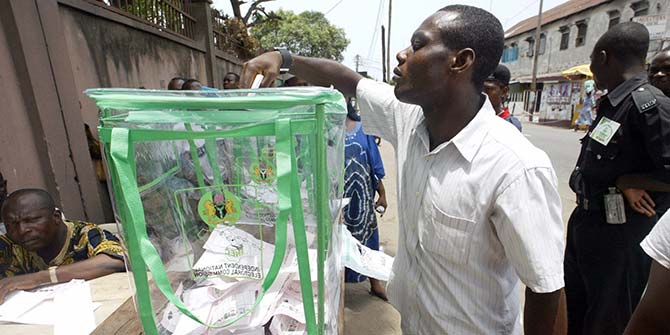Evaluating Transitional Justice: Accountability and Peacebuilding in Post-Conflict Sierra Leone provides the most thorough account to date of a landmark moment in the history of transitional justice, says Jamie Hitchen.
The Special Court for Sierra Leone (SCSL) was the first ‘hybrid’ international criminal tribunal. It was set up to try those allegedly responsible for atrocities committed during the country’s decade-long civil war. Along with a Truth and Reconciliation Commission (TRC) it provided, at a cost of nearly US$250 million, a new approach to transitional justice in a post-conflict setting. In total, 13 individuals deemed “most responsible” were convicted, including former Liberian President Charles Taylor.
This edited volume draws on a wide range of expertise regarding the legal processes of the court, its precedent-setting jurisprudence, the politics behind its creation, links to local justice and whether it contributed to development and peacebuilding. In doing so it delivers the most comprehensive account to date of the impact of transitional justice mechanisms on building peace in Sierra Leone.
Recognition of the importance of the political economy within which a transitional justice mechanism was designed in Sierra Leone is refreshing, and this is succinctly provided in the chapters by Mahony and Harris/Lapin. Mahony argues that despite the court’s mandate to put on trial those most responsible, in reality it “pursued only those it was politically expedient to prosecute”. The non-selection of the then President Kabbah, despite his involvement as minister of defence throughout the conflict, and the decision to ignore the roles of regional leaders Gaddafi and Compaoré, highlighted how the judicial process was, to an extent, a political tool in the hands of national and international actors.
The lack of local input to the design and implementation of the court is highlighted in chapters by Sesay and Jackson. The SCSL was – and is – seen as distant and irrelevant by many Sierra Leoneans. Jackson questions whether it should be labelled ‘hybrid’ at all, being more akin to “an extra-terrestrial visit”. However, he stresses the importance of not over-romanticising the potential of indigenous justice mechanisms, given the inherent risk of reinforcing traditional power structures that had a role in starting the conflict. Jackson, Kelsall and Sesay all agree that the SCSL, and even the TRC, were at odds with popular expectations of justice which held forgetting and compensation in higher regard than truth-telling and more formal legal redress.
The volume also scrutinises the TRC, widely praised for “the definitive account” it delivered of the conditions and causes that brought about the civil war. A number of chapters mention how a severe lack of resources meant that the TRC was “completely overshadowed by the SCSL”. The TRC’s inability to act on one of its biggest findings – namely, that most Sierra Leoneans wanted financial reparations – “sent a message to vulnerable populations that neither their needs nor their voices were a priority”, claims Friedman in her chapter on the promises and limitations of restorative justice.
This edited volume offers necessary contextual analysis of the broader post-conflict and peacebuilding environment in Sierra Leone. In doing so it critically analyses claims that the justice process has wider impacts, for example on legal reform and reconciliation. Mitton’s argument that a pragmatic “negative peace” prevails in the country, with many ex-combatants having avoided integration and reconciliation altogether, provides important nuance. It also questions how much of a role transitional justice mechanisms have played in what is widely perceived as Sierra Leone’s successful post-conflict transformation.
The criticism of the SCSL’s relevance for ordinary citizens is an argument powerfully made. Yet the volume is itself lacking Sierra Leonean voices. The perspective of those involved in the creation and running of Fambul Tok, an initiative that sought to deliver a community- led approach to justice would have been a welcome addition. Furthermore, the brief overview of the conflict given in the introductory chapter could have benefited from drawing more on David Keen’s notion of ‘sobels’ to give the reader, unfamiliar with the complexities of the conflict, a greater understanding of the difficulties confronting any attempt at providing post-conflict justice.
In concluding, the editors posit three important lessons from Sierra Leone for post-conflict transitional justice more broadly: funding for a transitional justice process should be clearly allocated from the start; local and international political dynamics have a great impact on the process; and transitional justice must be better integrated with wider development and peacebuilding agendas. Thought-provoking points that should encourage further research both in Sierra Leone and other countries endeavouring to deliver transitional justice.
Evaluating Transitional Justice: Accountability and Peacebuilding in Post-Conflict Sierra Leone (eds.) Kirsten Ainley, Rebekka Friedman & Chris Mahony. Palgrave Macmillan
Jamie Hitchen is a Policy Researcher at the Africa Research Institute (@AfricaResearch). Follow him on Twitter @jchitchen.







1 Comments